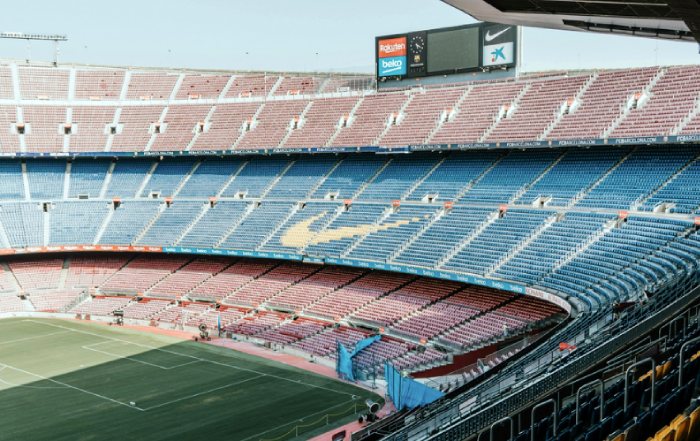In 2025, eSports has evolved from a niche community pastime into a dominant force redefining the global sports ecosystem. What began as local gaming tournaments has now become a multibillion-dollar industry, with audiences surpassing those of many traditional sports. According to market analyses from Newzoo and Statista, global eSports revenues are projected to exceed $2.5 billion by the end of 2025, driven by sponsorships, media rights, merchandising, and live event attendance. The phenomenon is no longer confined to digital screens but has entered stadiums, television networks, and international sports federations, creating an ecosystem that mirrors — and increasingly rivals — traditional athletic disciplines.
To understand the depth of this transformation, one must examine how eSports has shifted the cultural, economic, and psychological foundations of what constitutes “sport.” It has not only changed how audiences consume competition but also how younger generations define skill, discipline, and performance. Platforms such as Twitch, YouTube Gaming, and Kick have turned digital competition into a global spectator event, where elite players are treated with the same reverence as professional athletes. Learn more about the evolution of digital entertainment.
At its core, eSports represents a democratization of access and aspiration. While traditional sports often require specific physical attributes, training facilities, and economic backing, eSports lowers the entry barrier to anyone with strategic intellect, reflexes, and access to a computer or console. This inclusivity has accelerated its popularity in regions like Asia, Europe, and North America, where digital connectivity is universal and youth engagement with gaming is already embedded in social culture.
From Arcades to Arenas: The Evolutionary Timeline
The rise of eSports cannot be separated from the evolution of technology and online interactivity. In the late 1990s, LAN competitions of titles like StarCraft, Counter-Strike, and Quake laid the groundwork for professionalized gaming. By the mid-2000s, broadband connectivity enabled large-scale multiplayer tournaments, and by the 2010s, streaming platforms amplified the audience reach exponentially. Today, eSports arenas mirror the grandeur of traditional stadiums, hosting live audiences in cities such as Seoul, Los Angeles, Berlin, and Shanghai.
Games like League of Legends, Dota 2, Valorant, and Call of Duty now dominate this competitive space. The League of Legends World Championship consistently draws viewership figures surpassing 100 million, rivaling global sports spectacles such as the Super Bowl and UEFA Champions League Final. As technology advances, augmented and virtual reality integrations are beginning to blur the lines between the digital and the physical, creating hybrid spectator experiences that blend real-world arenas with immersive digital environments.
These innovations echo a broader societal trend toward technological fusion in entertainment. Read about the intersection of innovation and sports performance and how hybrid technologies are shaping future competition models. The convergence of artificial intelligence, motion tracking, and real-time analytics now enables fans to engage more deeply with the game’s tactical layers, understanding the split-second decisions that define victory.
Cultural Legitimization: From Hobby to Professional Discipline
The journey toward cultural acceptance has been one of the most remarkable aspects of eSports’ ascent. For decades, gaming faced stigma as a recreational distraction, often misunderstood by older generations. However, the professionalization of eSports — through structured leagues, rigorous training regimens, and corporate sponsorship — has redefined the narrative. Universities across the United States, United Kingdom, and South Korea now offer scholarships for eSports athletes, recognizing the discipline as an intellectual and strategic pursuit comparable to traditional team sports.
Organizations such as ESL, BLAST Premier, and Riot Games have played a crucial role in institutionalizing competitive frameworks that emulate the professionalism of leagues like the NBA and FIFA. Learn more about sports business ecosystems that mirror these structures. Teams employ coaches, analysts, nutritionists, and even psychologists to optimize player performance, creating an infrastructure of professionalism that transcends the casual gaming stereotype.
The cultural impact extends beyond players to content creators, streamers, and broadcasters, whose commentary and storytelling have become integral to fan engagement. Much like ESPN revolutionized traditional sports broadcasting, platforms like Twitch Rivals and YouTube Gaming Esports are transforming the digital narrative of sports commentary. The lines between athlete, entertainer, and influencer have dissolved, giving rise to a multidimensional sports culture deeply embedded in digital identity.
Economic Power and Global Expansion
The economic influence of eSports extends far beyond ticket sales or prize pools. Sponsorships from major brands such as Red Bull, Intel, Mercedes-Benz, and Nike have redefined sports marketing for the digital age. These companies recognize that eSports audiences represent a generation of tech-savvy consumers who engage more through interactive storytelling and community-driven experiences than passive advertising. Explore how global brands and sports marketing are reshaping fan experiences through immersive technologies and influencer collaborations.
The regional dynamics of eSports expansion also illustrate how digital economies adapt to local cultures. In South Korea, professional gaming has been a national phenomenon for decades, with televised tournaments and state-of-the-art training houses. In China, state investment in gaming infrastructure has fueled a surge in professional teams and streaming platforms. Meanwhile, Europe and North America have focused on league standardization, player contracts, and intellectual property rights, ensuring sustainable growth.
In emerging markets like Southeast Asia, Brazil, and South Africa, eSports has become a gateway to digital entrepreneurship, offering opportunities in content creation, event production, and sponsorship management. This global diffusion reflects a broader pattern of digital economy diversification — one where competitive gaming acts as a catalyst for job creation, creative industries, and even tourism through major international events. Learn more about global sports business trends shaping the next decade.
🎮 The Evolution of eSports
From Arcades to Global Phenomenon
Youth Engagement and the Reimagining of Sports Identity
The demographic backbone of eSports is youthful, passionate, and globally connected. Unlike traditional sports audiences that skew older, the average eSports viewer is between 18 and 34 years old — a demographic coveted by marketers for its high engagement and purchasing power. What sets this audience apart is the participatory nature of their engagement. Viewers are not merely spectators but active participants through chat interactions, live polls, and in-game decision-making events.
This participatory culture has redefined fan loyalty. Instead of rooting for teams based on geographic proximity, fans align themselves with players, streamers, or digital communities that resonate with their identity. The rise of global teams such as Team Liquid, Fnatic, T1, and 100 Thieves underscores the borderless nature of eSports fandom. Learn more about sports culture and identity and how digital globalization is reshaping traditional allegiances.
This shift has also encouraged traditional sports organizations to adapt. Clubs such as Paris Saint-Germain, Manchester City, and FC Barcelona now operate their own eSports divisions, leveraging their established fan bases to bridge generational gaps. The International Olympic Committee (IOC) has even introduced the Olympic Esports Series, legitimizing digital competition as part of the broader athletic movement.
Technological Integration and the Future of Hybrid Sports
The convergence of technology and athletic performance has given rise to a new era of hybrid competition, where physical prowess meets digital precision. eSports has been instrumental in pioneering this integration. Technologies such as virtual reality (VR), augmented reality (AR), and artificial intelligence (AI) are now transforming both traditional and electronic sports ecosystems. VR-based training modules allow athletes to simulate real-world environments without physical strain, while AI-driven analytics enable eSports players to review reaction times, strategic decisions, and cognitive performance in real time.
In this context, eSports organizations have become laboratories of innovation, experimenting with technologies that are later adopted by mainstream sports. Professional football teams, for example, are using motion-capture systems inspired by gaming environments to track player movement and biomechanics. Similarly, Formula 1 simulators have evolved from training tools into full-fledged competitive platforms that merge digital simulation with real-world racing data. Learn more about innovation in competitive performance and how technology continues to redefine athletic boundaries.
The rise of mixed-reality tournaments, where digital gameplay overlays physical space, is another indicator of convergence. Events like The Hado World Cup in Japan blend eSports mechanics with athletic motion through AR gear, allowing players to physically dodge, sprint, and attack within a digital field of energy projectiles. This type of innovation showcases a future where the binary distinction between digital and physical sports dissolves entirely, ushering in a new entertainment genre that appeals to both gamers and athletes.
Ethical Dimensions of Digital Competition
While eSports’ growth has been largely celebrated, it has also sparked significant ethical and health-related debates. Concerns surrounding player burnout, mental health, and performance-enhancing technologies have entered the public discourse. Professional gamers often train for twelve hours a day, leading to repetitive strain injuries, vision fatigue, and psychological stress. Organizations such as the World Health Organization (WHO) and National Institutes of Health (NIH) have initiated research into digital health risks, examining how competitive gaming impacts neural and physical well-being.
Moreover, the question of fair play in digital environments is increasingly complex. Unlike traditional sports, where physical violations are visible, cheating in eSports often occurs through software manipulation or unauthorized hardware. Anti-cheat systems such as Valve Anti-Cheat (VAC) and Riot Vanguard continuously evolve to maintain competitive integrity, yet controversies persist, highlighting the need for regulatory oversight comparable to WADA’s standards in traditional sports.
The issue of gambling and youth exposure further complicates the ethical landscape. The integration of microtransactions and betting platforms in gaming ecosystems has blurred the line between entertainment and gambling, raising policy concerns across countries. Learn more about how global sports institutions are adopting ethical governance frameworks to ensure transparency and accountability within digital sports environments.
As eSports continues to gain legitimacy, governance becomes a defining factor of its sustainability. Establishing international federations, standardized rules, and player welfare protocols will determine whether it matures into a truly global and ethically responsible sporting institution.
eSports as a Reflection of National Identity
The ascent of eSports has also become a cultural mirror reflecting the digital identity of nations. In South Korea, where high-speed internet and gaming cafes have been integral to social life for decades, eSports has been recognized as a professional sport by the government, complete with official licenses and national representation. Meanwhile, China views eSports as a strategic industry contributing to its digital economy, investing heavily in stadiums, education programs, and international tournaments.
In the United States and Europe, eSports has evolved through corporate sponsorships, media partnerships, and collegiate leagues, creating an ecosystem where competition intersects with education and entertainment. National pride now extends into digital arenas, where victories in tournaments like Overwatch World Cup or Counter-Strike Majors evoke the same fervor as Olympic medals. Read about how sports and world identity intersect in shaping international fandom.
The geopolitical influence of eSports is also evident in soft power dynamics. Nations that dominate global gaming titles gain cultural prestige, much like those excelling in football or athletics. This digital dominance also fuels tourism and trade, as host cities like Singapore, Berlin, and Tokyo attract global audiences for major tournaments. The rise of eSports diplomacy — where governments sponsor teams and events to promote international goodwill — illustrates how gaming now contributes to the narrative of modern cultural diplomacy.
Economic Ecosystems and Job Creation
Beyond entertainment, eSports represents a significant employment generator. The sector sustains a wide network of professionals, from software developers and event organizers to brand managers and sports psychologists. The ecosystem also supports broadcasting talent, production crews, and marketing agencies that operate in synchronization to deliver global events streamed to millions. Explore how the sports business ecosystem has expanded through eSports-related careers and digital innovation.
Educational institutions have begun developing specialized degrees in eSports management, digital media production, and sports analytics, recognizing the career potential in this sector. Countries like Canada, Germany, and the United Kingdom now offer government-backed programs that train students in event logistics, marketing, and game design. These initiatives underscore a shift in employment paradigms, where traditional roles are replaced or complemented by digitally driven professions.
Sponsorship revenue also contributes significantly to economic growth. According to research from PwC and Deloitte, eSports sponsorships are expected to grow at a compound annual rate exceeding 12% between 2025 and 2030. Major consumer brands increasingly view eSports partnerships as high-value advertising opportunities due to the audience’s global reach and digital fluency. This has reshaped corporate marketing strategies, emphasizing authenticity, interactivity, and social engagement over traditional ad placements. Learn more about global brand integration and sponsorship trends driving new marketing frontiers.
Infrastructure, Investment, and the Role of Cities
Cities have become central to the expansion of eSports. The construction of purpose-built arenas, gaming academies, and broadcasting facilities signals a long-term investment in digital infrastructure. For instance, Riyadh, Shanghai, and Los Angeles have launched large-scale eSports districts designed to attract both tourism and technology innovation.
These hubs serve as more than entertainment centers; they are catalysts for urban regeneration and youth engagement. The rise of eSports tourism — where fans travel internationally to attend tournaments — has spurred growth in hospitality, transportation, and media production industries. Learn more about global destinations in sports and travel where digital entertainment converges with real-world adventure experiences.
Investors from traditional sports backgrounds have also entered the market. Owners of NBA and Premier League teams now fund eSports franchises, recognizing their commercial synergy. This cross-pollination demonstrates that the future of sports investment will not rely solely on physical venues or conventional broadcast rights but on the fusion of digital interactivity and real-world engagement.
The Psychological and Sociological Transformation of Competition
The psychology of competition has undergone profound evolution under the influence of eSports. Cognitive scientists have noted that professional gamers demonstrate exceptional levels of focus, pattern recognition, and strategic thinking — traits shared with elite athletes in chess or motorsport. However, the social structure surrounding these athletes differs dramatically. eSports operates in virtual social ecosystems where collaboration, communication, and cultural exchange transcend geography.
This has resulted in new forms of community identity, where fans and players interact directly without intermediaries. Platforms like Discord and Reddit have become social stadiums, hosting conversations, debates, and analyses of professional play. The intimacy of this interaction has fostered strong loyalty but also introduced challenges, such as online toxicity and cyberbullying, which governing bodies now work to mitigate.
Furthermore, the digital environment amplifies visibility and accountability. Every play, comment, and performance is archived, creating a transparent history of competition and personal growth. This perpetual exposure drives both excellence and pressure, as eSports athletes navigate the dual demands of public performance and personal authenticity. Learn more about sports lifestyle and mental resilience that define modern competitive culture.
Cross-Industry Collaboration and Commercial Synergy
As eSports continues to grow, its ecosystem has expanded far beyond gaming itself, catalyzing partnerships across entertainment, fashion, automotive, and even finance. The boundaries separating industries have blurred, resulting in a multidimensional entertainment economy. Fashion brands like Louis Vuitton, Nike, and Puma have collaborated with gaming franchises such as League of Legends and Fortnite, creating limited-edition collections that merge luxury design with digital culture. These collaborations symbolize a generational shift where digital aesthetics influence real-world identity.
Automotive giants, including BMW, Mercedes-Benz, and Audi, have invested heavily in eSports sponsorships and technological innovation. By aligning with professional teams and streaming events, they reach younger audiences who are increasingly disengaged from traditional television advertising. Similarly, financial technology companies like PayPal, Revolut, and Crypto.com have entered eSports sponsorships, reflecting a broader shift toward digital-native branding and cryptocurrency integration within virtual economies. Learn more about business innovation and cross-sector influence shaping the digital entertainment landscape.
These alliances demonstrate a transformation in consumer engagement. Rather than targeting audiences through static advertising, brands now engage through immersive storytelling, live experiences, and influencer collaborations. This approach aligns perfectly with eSports’ participatory ethos — a culture where engagement, community, and identity form the backbone of consumer behavior.
The Convergence of eSports and Traditional Sports Institutions
The influence of eSports on traditional sports culture is now unmistakable. Professional sports leagues have embraced gaming as both an outreach and innovation strategy. The NBA 2K League, jointly operated by Take-Two Interactive and the National Basketball Association, allows fans to experience the thrill of basketball in an interactive digital format while maintaining strong ties to real-world teams. Similarly, Formula 1 Esports Series has successfully merged virtual racing with real driver data, enabling fans to engage in predictive analytics and strategy-based competition alongside professional racers.
Football clubs, particularly in Europe, have been among the first to integrate digital divisions into their brand strategies. Teams like Manchester United, Paris Saint-Germain, and FC Barcelona now run eSports academies, fostering talent pipelines that mirror their physical training programs. This dual presence reinforces their identity as global entertainment brands rather than just athletic institutions. Read more about sports innovation and competitive culture driving the future of athletic evolution.
Traditional broadcasters have also adapted to the eSports wave. Networks like ESPN, Sky Sports, and Tencent Sports have incorporated gaming tournaments into their programming schedules, recognizing that the modern viewer values interactivity and immediacy. The introduction of digital fantasy leagues and live analytics for eSports matches mirrors the same engagement tools used for football, basketball, and cricket, illustrating the near-total convergence of entertainment ecosystems.
Sustainability and the Future Vision of eSports
As the eSports industry matures, sustainability has become a central consideration. The environmental impact of large-scale digital events, particularly concerning energy-intensive data centers, live streaming infrastructure, and international travel, has prompted organizations to adopt eco-conscious initiatives. Intel, for instance, has launched energy-efficient processors and data center solutions aimed at reducing the carbon footprint of competitive gaming. Similarly, major tournaments are experimenting with virtual attendance models that minimize travel while maintaining immersive experiences through VR and AR.
The push for sustainability extends to digital inclusion as well. Ensuring equitable access to high-speed internet, affordable devices, and fair competition across socioeconomic groups remains a moral and developmental priority. Learn more about how global business and ethics intersect to create responsible sports innovation models that align with sustainability principles.
Moreover, eSports’ future growth will hinge on regulatory frameworks addressing data privacy, intellectual property rights, and digital safety. With younger demographics deeply engaged in these platforms, governments and corporations must collaborate to maintain integrity and safety in digital environments. The role of education in digital citizenship — understanding online behavior, sportsmanship, and mental resilience — will be fundamental in shaping responsible future athletes.
Cultural Integration and the Redefinition of Heroism
One of the most profound cultural shifts eSports has introduced is the redefinition of heroism and excellence. Traditional sports often celebrate physical strength, endurance, and agility; eSports, in contrast, celebrates strategic intelligence, precision, and digital collaboration. This reorientation challenges conventional definitions of what it means to be an athlete. It expands the concept of competition beyond physical boundaries into cognitive and technological mastery.
eSports athletes command millions of followers across platforms, embodying both celebrity and mentor roles for younger audiences. Their influence is not limited to entertainment but extends into social advocacy, education, and entrepreneurship. Figures such as Faker (Lee Sang-hyeok) from T1, Ninja (Tyler Blevins), and S1mple (Oleksandr Kostyliev) have become cultural icons, demonstrating how digital excellence can inspire global audiences. Explore related insights on world culture and sports identity and how emerging icons are shaping new definitions of fame.
This digital form of heroism also aligns with a broader generational trend toward self-empowerment and online community building. It reflects an age where influence is determined by engagement and authenticity rather than gatekeeping institutions. In this environment, both traditional and digital athletes coexist, learning from each other’s experiences to navigate fame, performance, and responsibility in interconnected worlds.
The Globalization of Competition and Shared Experience
The globalization of eSports represents one of the most inclusive developments in modern entertainment. Players from diverse cultural, linguistic, and economic backgrounds compete on equal footing, connected through a universal digital platform. This inclusivity transcends the barriers that often define traditional sports — such as geography, gender, or physical limitations — and fosters a sense of global citizenship through shared experience.
The Asian Games 2023 marked a milestone by including eSports as an official medal event, signaling its full integration into international sporting frameworks. This achievement represents a historic acknowledgment of gaming as a legitimate athletic pursuit. The decision by Olympic committees worldwide to consider eSports for future inclusion further illustrates the global institutional shift toward recognizing digital competition as part of humanity’s evolving sports narrative.
The spread of competitive gaming in countries like Japan, Brazil, South Africa, India, and Finland highlights its adaptability across cultures. While each region approaches eSports differently — from Japan’s focus on innovation to Brazil’s emphasis on community — the unifying thread remains the passion for skill, strategy, and digital excellence. Learn more about global adventure and sports destinations shaping new experiences for digital competitors and fans.
Toward a Post-Digital Sports Era
By 2025, the distinction between traditional and electronic sports is becoming increasingly obsolete. The future points toward a post-digital sports era, characterized by full integration between physical and virtual competition. Motion-tracking technologies, biofeedback sensors, and neural interfaces are beginning to merge human performance with machine precision, creating experiences that challenge our perception of what sport can be.
Institutions such as MIT Media Lab, Stanford Human Performance Alliance, and Sony Interactive Entertainment are developing prototypes of mixed-reality competitions where athletic performance is simultaneously physical and algorithmic. This intersection of biology, data, and design signals an epoch where sport transcends its material limitations to become a dynamic exploration of human potential. Explore how innovation and safety in sports technology will shape this transformative frontier.
This convergence will demand new ethical, economic, and philosophical frameworks to define fairness, ownership, and the meaning of victory in hybrid environments. Yet it also holds the promise of unprecedented collaboration between athletes, technologists, and audiences — an arena where creativity and competition become indistinguishable.
Final Reflections for 2025 and Beyond
The rise of eSports represents more than a technological revolution; it is a cultural and psychological redefinition of competition itself. It encapsulates the transition from industrial to digital societies, where information, interaction, and imagination are the new currencies of human excellence. For traditional sports, eSports is not a threat but a mirror — reflecting both the enduring human desire for mastery and the evolving mediums through which we pursue it.
By integrating inclusivity, sustainability, and innovation, eSports offers a vision of what global sport can become: a universal language of collaboration and creativity that bridges cultures and generations. Its influence on traditional sports will continue to deepen as institutions embrace digital transformation not as an alternative but as a continuation of the athletic spirit.
For xdzee.com, this evolution epitomizes the interconnected nature of sports, adventure, and global culture — a reminder that the human drive to compete, explore, and innovate transcends every boundary, whether physical or virtual. Learn more about emerging perspectives on sports and world adventure culture and how eSports continues to shape the way humanity defines play, passion, and progress in the twenty-first century.







